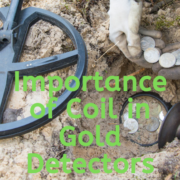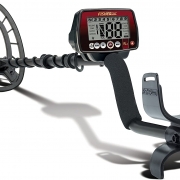Importance of Coil in Gold Detectors
Coils play a very important role in determining the effectivity and performance range of the gold detectors. It is very important that he buyers must choose the coil which is most suitable to their specific purpose or at least possesses the options to alter because if a specific coil is not able to perform in their circumstance, the gold detector would completely go to waste as the required gold items will not be detected or will be ignored. Here are some factors determining the importance of coil in gold detectors:
Coil manufacturing
There are many brands of manufacturers who are only operating in the area if producing coils of various sizes, designs, and technologies for different models of gold detectors. Some examples of coil only manufacturers include Coil Tech, Nugget Finder, Kamra, Nel. etc. Most of the quality coils are manufactured in the United States of America and Australia.
Coil Weight
The if the coil size is less, it will weigh less and if the buyer chooses a bigger coil size, it will weigh the machine down. And that will cause trouble to handle the swinging motions of the gold detector in the field. If the coil technology is varied, it will have no significant impact on the weight of the coil as it is mostly just manipulated by the amount of material in hardware.
Waterproofing
Waterproofing options are available for coils only, which makes it cost-effective for the gold detectors which are only required to work in the slightly watery ground at the surface level only. But if the buyer requires a fully weatherproof instrument, then it will be available as well.
Options for Upgrade
If the treasure hunter wants to explore a new situation which could not be tested with one particular type of coil, an option is available to change the coil to the required size, called upgrading or downgrading the coil. For that purpose, a new gold detector will not be required but only changing the coil will significantly affect the operations of a gold detector.
Purpose determines Type of Coil
Your mission and vision about the purpose of gold prospecting must be clear in terms of knowing the type of soil to be explored, the depths required to be covered underground and what would be the size of gold objects to be found, etc. Because this will determine what type and size of the coil are required for the buyer.
Know Your Coil
-
Swing Speed
As detectors are based on motion-induced technology i is required to continuously swing the coil like a pendulum’s motion. But this speed of swinging can also vary depending upon the model of the gold detector.
-
Ground Distance
One more important factor to determine the effectivity of the coil is its distance from the ground. In most of the cases, the appropriate distance to be maintained from a coil to the ground is usually about 1 inch.
-
Discipline
The integrity of the coil is to be maintained on the surface of by ground by making sure sufficient distance is kept such that it does not damage the coil by hitting any obstacles in the way during the swinging etc.
Sizes in Coils
-
Small Coils
They start from 5 inches and have a maximum size of 8 inches. In addition they are preferred for high mineralized soil areas. Where possible trashy metallic objects buried underground. The area coverage is negative because of the smaller size. It takes extra time and more swings to cover a limited amount of space.
-
Medium Coils
These coils lie in the range 8-11 inches in diameter and are the highly recommended type of detector. Coils being in the mid-range affordability and coverage wise. These are work at their best in highly mineralized soils.
-
Large Coils
These coils are relatively large including 11 inches, 15 inches, 16 inches, 18 inches, 32 inches, 22 inches, 25 inches, or above. They have relatively low sensitivity and ignore very small objects. Very poor performance in terms of pinpointing, but depth is very good as well as coverage time is fast. Pulse Induction technology, size increases then the effectivity of the coil increases as compared to the ones with VLF technology.
Angle of Coil
Importance of Coil in Gold Detectors the coil must be parallel to the ground at the angle of 180 degrees . Do not operate the coil’s swinging motions imitating a pendulum, i.e. to and for motions around an axis. If the gold detectors are very close to the ground, then their depth becomes compromised as the ground balance weakens which results in a noisier detector.



 03111444615
03111444615